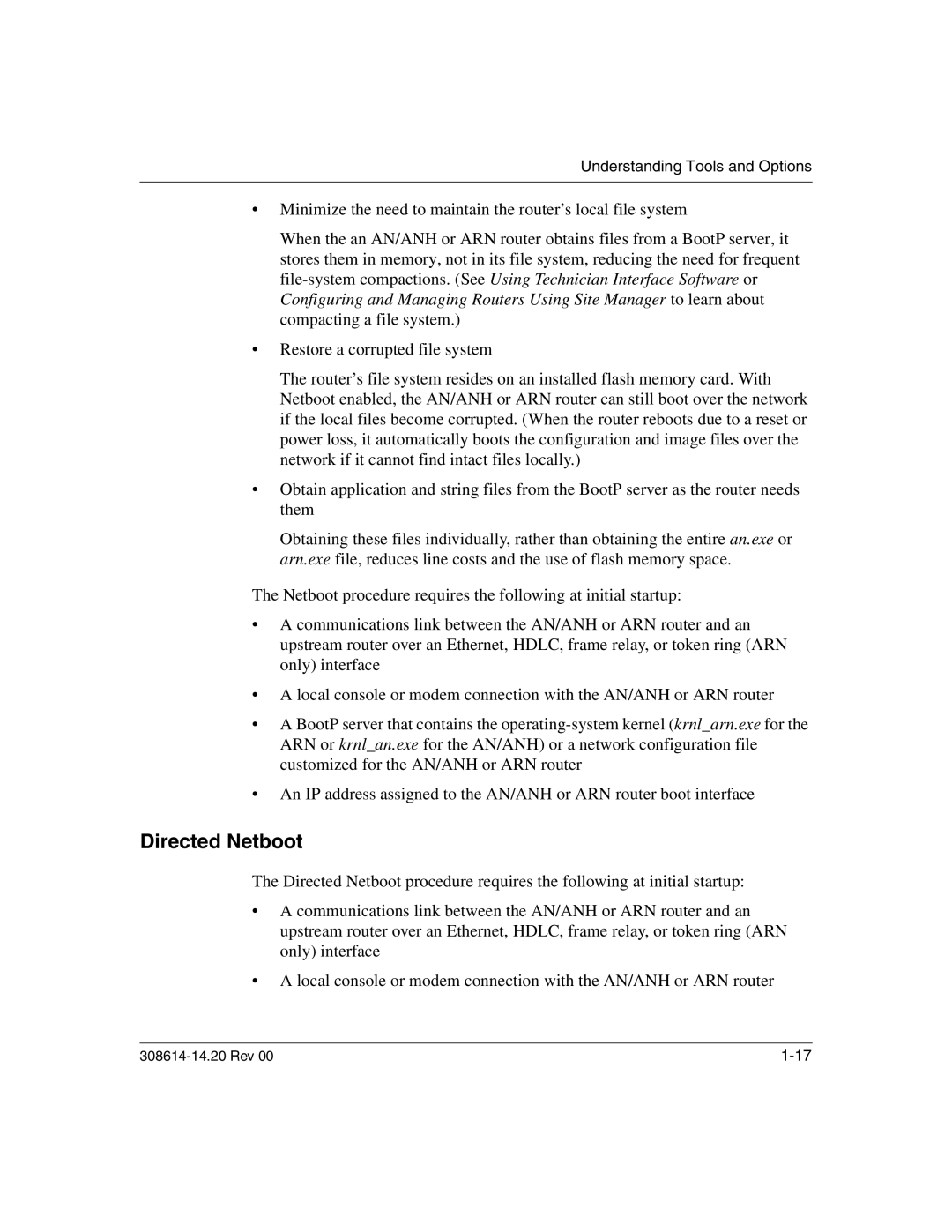
Understanding Tools and Options
•Minimize the need to maintain the router’s local file system
When the an AN/ANH or ARN router obtains files from a BootP server, it stores them in memory, not in its file system, reducing the need for frequent
•Restore a corrupted file system
The router’s file system resides on an installed flash memory card. With Netboot enabled, the AN/ANH or ARN router can still boot over the network if the local files become corrupted. (When the router reboots due to a reset or power loss, it automatically boots the configuration and image files over the network if it cannot find intact files locally.)
•Obtain application and string files from the BootP server as the router needs them
Obtaining these files individually, rather than obtaining the entire an.exe or arn.exe file, reduces line costs and the use of flash memory space.
The Netboot procedure requires the following at initial startup:
•A communications link between the AN/ANH or ARN router and an upstream router over an Ethernet, HDLC, frame relay, or token ring (ARN only) interface
•A local console or modem connection with the AN/ANH or ARN router
•A BootP server that contains the
•An IP address assigned to the AN/ANH or ARN router boot interface
Directed Netboot
The Directed Netboot procedure requires the following at initial startup:
•A communications link between the AN/ANH or ARN router and an upstream router over an Ethernet, HDLC, frame relay, or token ring (ARN only) interface
•A local console or modem connection with the AN/ANH or ARN router
